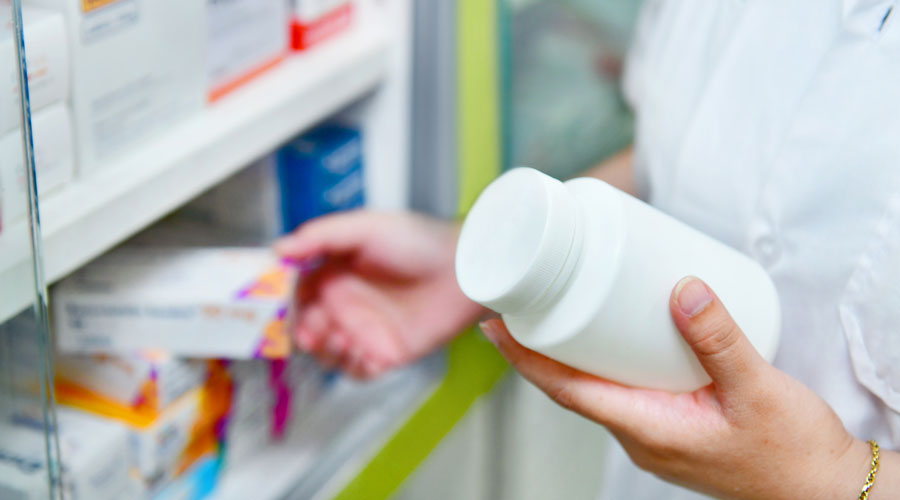Inside: Inventory is your pharmacy’s biggest investment. Learn how measuring pharmacy inventory can maximize your pharmacy’s dollars.
Your pharmacy business runs on inventory.
Inventory turnover generates revenue for your business. And because inventory accounts for about 68 percent of your total expenses, inventory management can make the difference between an open business and a closed one.
Even the slightest shift in inventory can cause dramatic consequences.
Too much inventory on the shelf increases holding costs. Too little increases shortage costs. And, too many orders increase ordering costs.
You have to keep inventory costs in perfect balance to minimize the total cost of inventory while meeting demand.
The only way to manage those inventory costs well is to measure your pharmaceutical inventory precisely.
The right pharmacy inventory control methods can help. When you measure pharmacy inventory, you can ensure you have the right amount of inventory at the right time. That way you keep costs as low as possible to meet demand.
Here’s what your independent pharmacy needs to know about measuring pharmacy inventory to increase revenue.
Read Next: The Complete Guide to Pharmacy Inventory Management (Includes 7 Formulas)
Use These 3 Methods to Measure Pharmacy Inventory
Traditionally, pharmacies measure pharmaceutical inventory in three ways. But it’s up to you to use the best method for your pharmacy’s needs.
1. The visual method
For the visual method, you eye-ball the inventory. You look at what’s on the shelves to see if any of the inventory appears low.
If you notice fewer products than there should be, you put in a new order.
This measurement requires staff to manually inspect the inventory.
The visual method is the simplest to learn. But it leaves lots of room for error. A groggy tech might overlook a product. Poor shelf arrangement might obscure a missing item. Anyone might write down the wrong NDC.
This method also makes it difficult to keep up with changing inventory levels. Which means it doesn’t do a great job at optimizing the balance of meeting minimal stock while meeting demand.
This measurement method is more fluid than systematic.
2. The periodic method
The period method measures inventory the same way as the visual method but it requires inspection at specified, recurring periods. (Usually weekly, monthly, or annually.)
This approach is more systematic than the visual method, which reduces some of the risks.
But it’s still in danger of the same pitfalls involved with a manual visual system. Depending on the amount of time between each period, inventory can undergo significant changes without you knowing.
Technology can improve the periodic method, particularly barcode scanners.
Instead of manually writing down product information, the tech simply scans the barcode of items that need reordering.
3. The perpetual method
The perpetual inventory method measures inventory continuously in real-time.
Your pharmacy computer system gets updated whenever a product is sold or received. So, you always know how much inventory you have on hand.
Most of this is happens automatically. You don’t need to walk down the aisles and count. There’s no scribbling on a clipboard.
This system easily incorporates with your ordering system to make sure items get automatically reordered once they reach a specified level. That allows your inventory to respond to demand, ensuring you have the right amount of product all the time.
The system can also generate reports and detailed data that you can use in a variety of ways to help you make smart business decisions.
The perpetual method offers tremendous benefits, but it also comes with the steepest learning curve because it’s highly technological.
Read next: How to Maximize Rebates and Profitability on Pharmacy Inventory
So, What’s the Best Method to Track Pharmacy Inventory?
The perpetual inventory method is the most common method used for measuring pharmacy inventory.
It offers obvious advantages over manual methods. But it works best when used in combination with the other two methods.
Computer systems aren’t foolproof. Periodically verifying pharmacy inventory serves to keep the system in check and reduce errors.
But some drug classes require specific methods of measurement.
For example, federal law requires a perpetual inventory system for Schedule II drugs. Make sure you know the requirements of your state board of pharmacy and of your state’s laws.
The Most Important Metric for Measuring Pharmacy Inventory
Even if you use the best method for measuring pharmacy inventory, how do you know if it’s successful?
The ultimate measurement of inventory success is turnover. You want to turn the most items in the least amount of time.
To measure that, use the inventory turnover rate.
Your pharmacy’s inventory turnover rate is the number of times you turn over your inventory in a given year.
The higher the inventory turnover rate, the more product you’re selling and the faster it’s leaving the shelf. The lower the inventory turnover rate, the less you’re selling and the slower it’s leaving the shelf.
Calculating the inventory turnover rate
To calculate the rate, you divide pharmacy’s annual cost of inventory by your total inventory.
The national average inventory turnover rate for independent pharmacy is 11. Anything below that is a red flag.
For a greater understanding of your pharmacy’s inventory, you can also calculate the number of days it takes to turn your pharmacy’s inventory.
To calculate that number, divide 365 by your inventory turnover rate.
Ideally, it should be less than 37 days. Any more days than that is a red flag.
How to Make Sure Your Pharmacy Maintains a Profit
The inventory turnover rate is the most important metric for measuring pharmacy inventory. But you also can’t afford to not measure the percent net profit ratio.
This metric ensures you’re maintaining a profit as you turn items.
You could have a fantastic inventory turnover rate and still operate at a loss because one of the most common ways to increase inventory turnover is to mark down prices.
The percent net profit ratio helps you track the profit-to-turnover balance.
Calculating the percent net profit ratio
The percent net profit ratio is the percent ratio of net profit to average inventory. (Average inventory divided by net profit.)
Calculate the average inventory by averaging beginning inventory and ending inventory values during a specified period of time.
The higher your percent net profit ratio, the higher your profit and vice versa.
As your inventory turnover rate increases, keep an eye on you percent net profit ratio to make sure that too much profit isn’t being sacrificed for the sake of turnover.
Read next: Here Are the Pharmacy Inventory Control Methods Every Pharmacy Needs to Know
What About Tracking Pharmacy Inventory You Can’t Control?
Some parts of your inventory are out of your hands.
Even though you can’t completely control this inventory, you still need to measure it so you know what effect it has on your business.
Two major types of inventory you can’t control are:
1. Unclaimed prescription
2. Stolen pharmaceuticals
Tracking unclaimed prescriptions
When patients don’t pick up their prescriptions, they sit in limbo. You can’t mark them as sold. But you also can’t mark them as accessible inventory. Which throws off your measurements.
Set a maximum period for holding filled prescriptions and return them your inventory after that period. (Here’s a full explanation of return-to-stock prescriptions.)
Tracking stolen pharmaceuticals
Almost 5 percent of pharmacy inventory gets stolen.
When inventory gets stolen, it lowers your percent net profit. Which normally indicates that you’re doing something wrong with your pricing. Without accounting for stolen items, your measurements will mislead you.
So, be aware of stolen items and unclaimed prescriptions to ensure the most accurate measurements of your pharmacy’s inventory.
Now you’ve got everything you need to increase revenue by measuring your inventory.
A Member-Owned Company Serving Independent Pharmacies
PBA Health is dedicated to helping independent pharmacies reach their full potential on the buy-side of their business. Founded and owned by pharmacists, PBA Health serves independent pharmacies with group purchasing services, wholesaler contract negotiations, proprietary purchasing tools, and more.
An HDA member, PBA Health operates its own NABP-accredited secondary wholesaler with more than 6,000 SKUs, including brands, generics, narcotics CII-CV, cold-storage products, and over-the-counter (OTC) products — offering the lowest prices in the secondary market.











